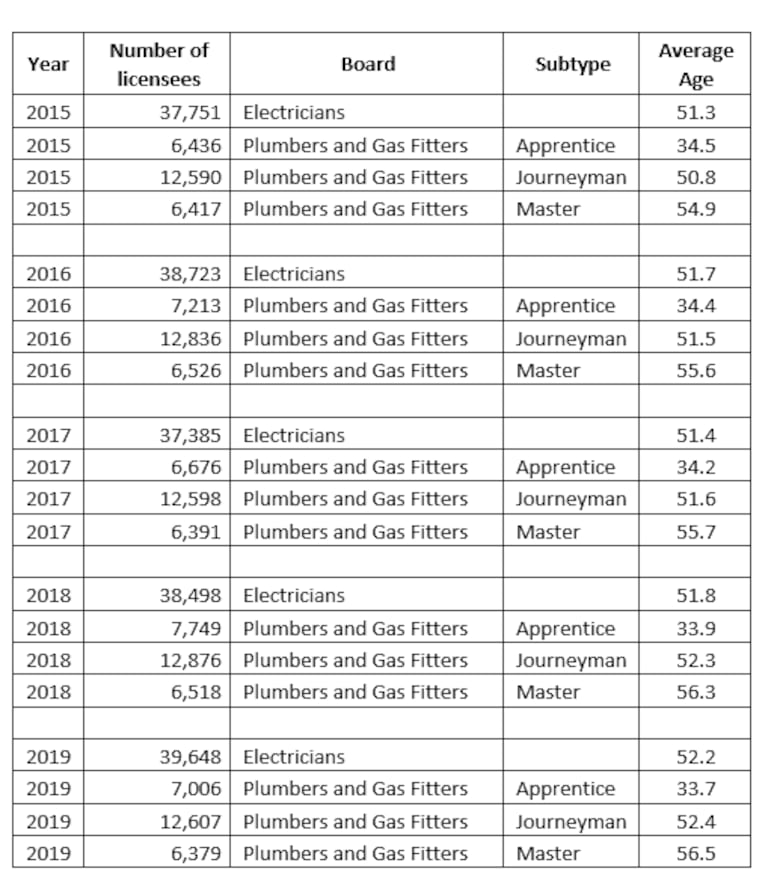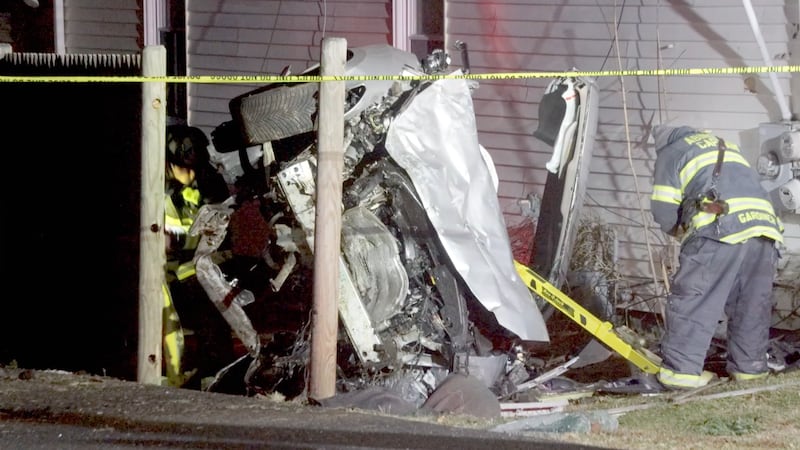BOSTON — On average, about 65 to 70 percent of high school seniors make college their next stop, according to the U.S. Bureau of Labor Statistics. But there’s another post-graduate option that might come with lower debt and a near-guarantee of a job: a career in one of the trades.
“Over the next five years, 65 percent of the jobs available in the skilled crafts and trades won’t have people to fill them,” said Sarah Turner, president of Boston’s North Bennett Street School, which has been turning out craftspeople since 1881. “Four-year colleges are really valuable to our communities, of course. But I think what’s important is that we have a range of options for people. That there’s not any one thing that’s considered success.”
The word ‘trades’ does include such things as plumbers and electricians but at North Bennett, they teach carpentry, furniture building and even violin-making. Tuition is not inexpensive. But Turner points out that the courses of study are shorter (most are one or two years), financial aid is available and the school monitors the job market to ensure it is only admitting as many students as employers can support on graduation. In other words, not many violin-making students get acceptance letters in any given year.
"We really are training for employment," Turner said. "We take it very seriously that we're preparing our people to be employed once they leave."
Rich Friberg teaches Preservation Carpentry at North Bennett. After two years, his students have the skills to restore historic properties and demand for their services is high.
“We can’t graduate them fast enough,” he said, noting that a National Park Service representative recently visited the class and offered employment to every student. “There’s not enough of them to graduate fast enough for the amount of work that’s out there.”
Friberg reiterated his point, admitting it was a nice problem for an instructor to have.
Some of the students at North Bennett have already been to college. For them, this is a second career. Deb Pasculano is learning carpentry as a retiree.
“I have the time on my hands. So I decided to come for a year and just do it for fun,” she said, as she practiced coping on a piece of molding.
Pasculano is actually following in the footsteps of her son, who came to the school after trying college for a semester and now makes a living buying, remodeling and reselling houses.
“This is really what he needed to do and how he figured out what to do in life,” she said.
Licensed Electrician Joshua Page figured out what to do in life by attending Montachusett Technical Vocational High School in Fitchburg.
“Trade school, for me, was where I found myself,” Page said. “Even though my grades weren’t good; my behavior wasn’t good; in the end, I found a sense of accomplishment by something there.”
Today, Page owns three electrical companies, has 17 employees and more than a dozen vehicles. He's passionate about making sure young people know all the career options after high school.
“College is just being pushed down everyone’s throats to say, this is the way you should do it,” Page said. “And it’s not the only option.”
Page says one big advantage of going into a trade such as electrician or plumbing is that you can get the required training with potentially no debt and, with the trades clamoring for workers, be certain of employment when finished. But, he says, the trades have an image problem.
“An electrician, a plumber, a sprinkler fitter, a carpenter, we’re dirty,” he said. “At the end of the day, our hands are dirty. We’re filthy. It’s just not cool.”
It may not be cool to be an electrician or plumber but the demand for both trades is high. The National Electrical Contractors Association says the industry added nearly 13,000 new apprentices last year in the U.S. but on the high-end, it’s possible the annual need for new electricians could top 33,000 workers.
In New England, demand for electricians the last two years has been double and triple the national average.
And there are warning signs of shortages from state registration figures. They show the average age of licensed electricians rising to 52.2 years last year and the average age of licensed master plumbers climbing to 56.5 years.
“If we don’t get these kids to replace the ones that need to retire, where we going to be at,” said Page.
Plumber Matt Fox knows where ‘we’re going to be at’ because the company he works for is already there.
Some of our colleagues who want free college for all aren’t actually thinking big enough. We’re going to have a shortage of plumbers, not MBAs.
— Amy Klobuchar (@amyklobuchar) January 15, 2020
Our money should go into K-12, free 1-2 year degrees and doubling Pell Grants — not sending rich kids to college. #DemDebate pic.twitter.com/iX3ZywelU4
“We’ve been advertising for months to find a licensed journeyman plumber. And we can’t find one. That’s how bad it is," Fox said.
Fox's assistant, Dylan Ouimette, recently graduated from a plumbing program at a local community college. It was a lonely ceremony.
“Total kids... I had about 13 kids and only four continued plumbing,” Ouimette said.
How will this affect homeowners? Josh Page says expect prices and wait times to increase.
“Prices will absolutely go up because the demand will go up, but the supply will still be declining,” Page said. “The wait times will soon enough be like scheduling your physical at your doctor’s months away,” he added.
Page said homeowners should also be on the lookout for substandard work, saying “some will go out on their own and perform ‘side work’ and may not have the insurance needed and are just looking to make a quick buck.”
He encourages more young people to consider the satisfaction that comes from a career in the skilled trades.
“There are houses all over Massachusetts and buildings that I can drive by and say, I did that. I was part of that project. I was there,” Page said. “And that’s what I needed. I needed to feel that sense of pride and accomplishment. And you can’t get that without your hands.”
RELATED: Women, single moms find new options in blue-collar jobs
© 2020 Cox Media Group






